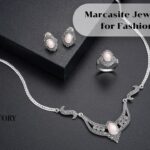Gold is one of the most beloved and sought-after precious metals in the world, admired for its timeless beauty, versatility, and enduring value. Whether used in jewelry, coins, or other forms, gold comes in different types, each with its own characteristics and care requirements. Without proper care, even the most exquisite gold pieces can lose their luster, tarnish, or become damaged over time. In this article, we’ll explore the specific care needs for different types of gold and offer expert tips on how to keep your gold looking its best.
Understanding Gold Karat and Its Importance
Before diving into the care routines for different gold types, it’s crucial to understand what “gold karat” means. The karat (K) system is a measure of the purity of gold, with 24K being the purest form of gold, consisting of 99.9% gold. Lower karat numbers, such as 18K, 14K, and 10K, indicate that the gold is mixed with other metals to make it more durable for everyday wear.
– 24K Gold : Pure gold, renowned for its bright yellow hue. While beautiful, it’s soft and prone to scratching, bending, and denting due to its malleability.
– 18K Gold : Contains 75% gold and 25% other metals like silver or copper. It’s more durable than 24K gold but still maintains a rich gold appearance.
– 14K Gold : Made up of 58.3% gold and 41.7% other metals. It’s commonly used in jewelry, as it strikes a balance between durability and gold content.
– 10K Gold : Consists of 41.7% gold and is one of the most durable gold alloys due to its higher proportion of mixed metals. However, it has a paler, less “golden” appearance compared to higher karats.
Each gold karat type needs slightly different care due to its composition and hardness. The more pure the gold, the softer and more delicate it is, which requires gentler handling.
Caring for 24K Gold

Because 24K gold is soft and easily scratched, it requires the most careful attention. Here are some tips to keep your pure gold items in top condition :
– Avoid wearing 24K gold jewelry during physical activities : This includes sports, gardening, or anything that could expose the gold to sharp objects or excessive pressure. The softness of 24K gold makes it prone to bending or denting.
– Store 24K gold items separately : Always store your 24K gold in individual pouches or lined jewelry boxes to avoid contact with harder objects, which can scratch or damage the surface.
– Cleaning 24K gold : Use a soft, lint-free cloth to gently wipe down the surface. Avoid abrasive materials or harsh chemicals. A simple mixture of warm water and mild dish soap works well for occasional cleaning. Soak the item briefly, then rinse and dry with a soft cloth.
Caring for 18K and 14K Gold
Since 18K and 14K gold are more durable due to the presence of mixed metals, they can withstand daily wear better than 24K gold. However, they still require proper care to maintain their appearance and avoid tarnishing.
– Keep away from harsh chemicals : Whether you’re wearing 18K or 14K gold, exposure to chemicals like chlorine (found in pools) or household cleaning products can damage the metal alloys and cause discoloration. Remove gold jewelry before swimming or cleaning.
– Polishing and cleaning : For regular maintenance, use a soft polishing cloth to buff your gold jewelry. For a more thorough cleaning, soak the gold in a solution of warm water and mild soap, then gently brush with a soft toothbrush. Rinse and dry the piece thoroughly.
– Storage : Like with 24K gold, store your 18K and 14K gold pieces in separate fabric pouches or lined compartments to avoid scratching from contact with other metals or gemstones.
Caring for 10K Gold
Because 10K gold contains a significant amount of other metals, it’s the most durable of the traditional gold karats. However, it is also more prone to tarnishing because of the higher percentage of mixed metals, particularly copper or silver.
– Preventing tarnish : Tarnish occurs when the non-gold metals in the alloy react with oxygen or moisture. To minimize tarnishing, keep 10K gold jewelry in a cool, dry place and store it in a sealed plastic bag or anti-tarnish pouch if possible.
– Regular cleaning : Clean 10K gold more frequently than higher-karat golds using warm water and a few drops of mild soap. Rinse and wipe dry with a soft cloth. You can also use a jewelry cleaning solution specifically designed for mixed gold alloys.
– Avoid perfume and lotions : Lotions, perfumes, and other beauty products can accelerate tarnishing in 10K gold. Apply these products before putting on your jewelry to avoid contact.
Gold Alloys and How They Affect Care
Gold is often alloyed with other metals to enhance its durability and alter its color. These gold alloys are popular for various types of jewelry, but each requires special care depending on the metals used in the alloy. Here are some common gold alloys and how to care for them :
White Gold
White gold is an alloy of gold and white metals like nickel, palladium, or silver. It’s often plated with rhodium to give it a reflective, white finish. Over time, the rhodium plating can wear off, revealing the yellowish tint of the underlying gold alloy.
– Preventing wear : To maintain the bright white appearance, you may need to have your white gold jewelry re-plated with rhodium every few years, depending on how often you wear it.
– Cleaning white gold : Clean white gold with a mild soap and warm water solution. Avoid abrasive cleaners or harsh chemicals that could damage the rhodium plating.
– Storage : Store white gold separately to prevent it from being scratched by harder metals or stones.
Rose Gold
Rose gold is made by mixing gold with copper, which gives it a warm, pinkish hue. While beautiful, the copper content makes rose gold more susceptible to tarnishing over time.
– Preventing tarnish : Store rose gold jewelry in a dry place, preferably in a pouch or box lined with anti-tarnish material.
– Cleaning rose gold : Use a soft cloth and a mild soap solution to clean rose gold. Since copper reacts to moisture, dry the jewelry thoroughly after cleaning to prevent tarnishing.
– Avoid exposure to chemicals : Like other gold alloys, rose gold can be damaged by exposure to harsh chemicals. Remove rose gold jewelry before swimming or cleaning with chemical products.
Gold-Plated Jewelry
Gold-plated jewelry consists of a thin layer of gold over a base metal, such as copper or brass. While gold-plated items are more affordable, the gold layer can wear off over time, revealing the base metal underneath.
– Handle with care : Since the gold layer is delicate, avoid wearing gold-plated jewelry during activities that could cause it to rub or scratch.
– Cleaning gold-plated jewelry : Use a soft, damp cloth to gently wipe the surface. Avoid vigorous scrubbing or using abrasive materials, as these can wear away the gold layer.
– Storage : Store gold-plated jewelry separately to prevent the gold layer from scratching or wearing off.
Conclusion : The Right Care for Your Gold
Gold is a durable and beautiful metal, but it still requires attention to maintain its shine and prevent damage. Whether you’re caring for pure 24K gold, durable 10K gold, or a trendy rose gold alloy, understanding the specific needs of your gold pieces is essential. By taking the time to clean, store, and protect your gold correctly, you’ll preserve its beauty and value for years to come. Remember, each type of gold—whether pure or alloyed—has unique characteristics that affect how it should be cared for, so tailor your routine to the specific type of gold in your collection.





